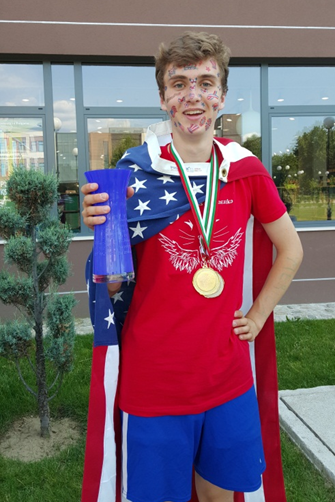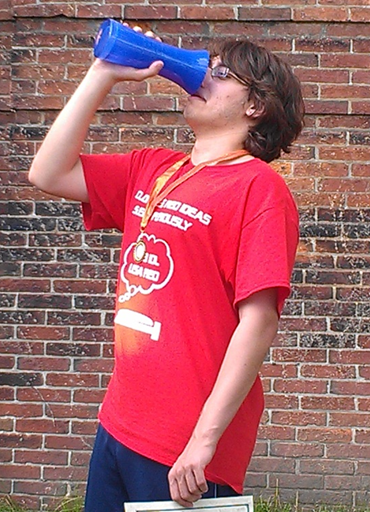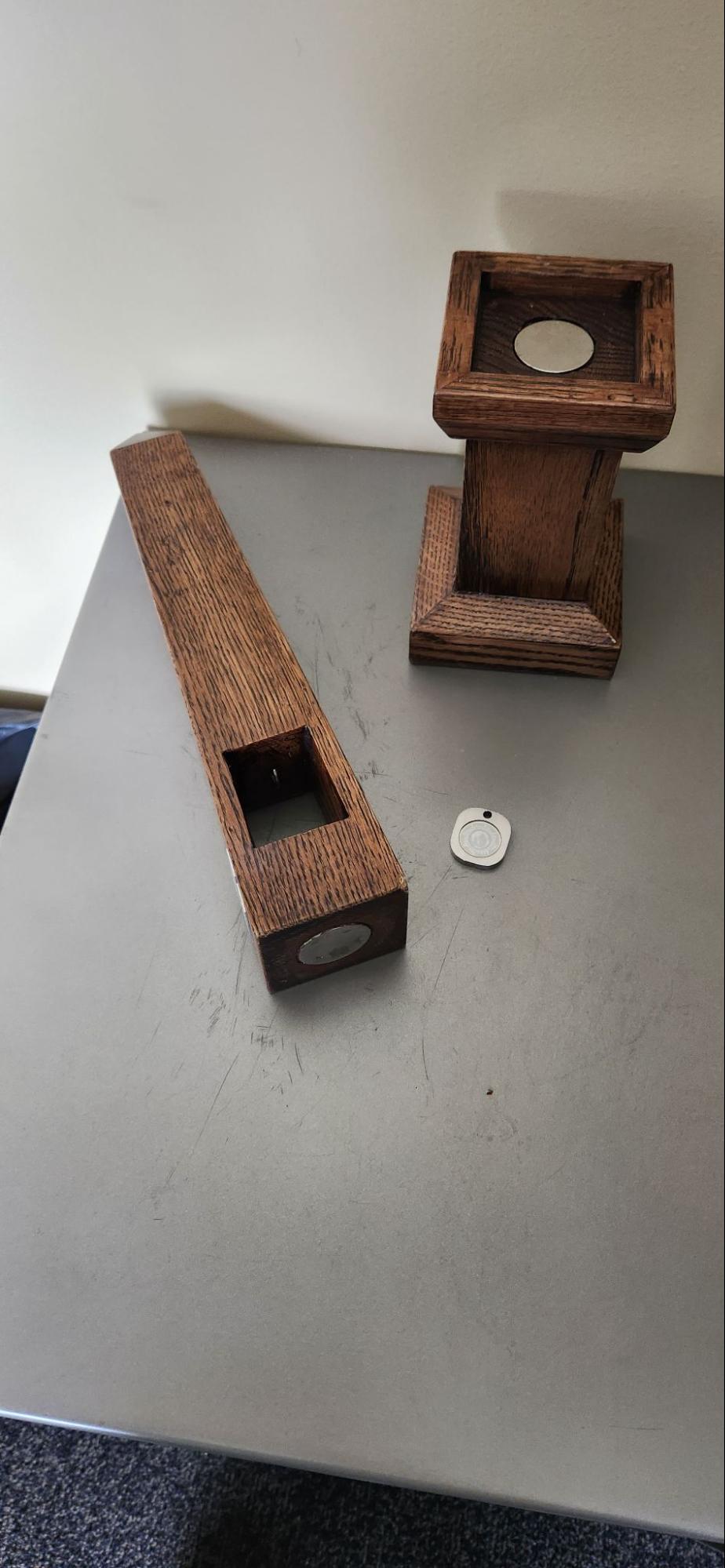A Tale of Two Trophies
If you have ever participated in the International Linguistics Olympiad (IOL), or if you are about to take part in the contest, then you may have heard that every year, the Jury of the IOL awards a trophy to the team that achieves the highest average score in the Individual Contest. The winning team takes the trophy home, engraves their team name on it, and then brings it back the following year. The tradition has become a popular one – but you may not know how it all started. What follows is the story of the trophy, narrated by Stanislav Gurevich (Co-Chair of the IOL Board, and member of the IOL Problem Committee), and Lori Levin (Team Leader for the US, and an IOL Board member).
The first trophy
by Stanislav Gurevich
The story of “the blue vase”, the predecessor to the modern trophy, begins in 2007 when the 5th IOL was held in Zelenogorsk, Saint Petersburg.
The Local Organizers and the Jury wanted to start some new traditions, as the IOL was growing – so I proposed a symbolic cup for the Team Contest winners. We were buying prizes in a bit of a rush, so the aforementioned “blue vase” was the best that we could get at short notice. It was agreed that the winners of the team contest would receive it, engrave their country name on it, and pass it on to next year’s winners.
However, when grading the Team Contest that year, we had the deepest disagreement among the Jury members that we had ever had. The main reason for this was that the problem assigned happened to be an “all-or-nothing” type of problem, and as a result there were 4 teams who solved it and 11 who did not. In the end, after fierce arguing and silly voting, we awarded 2 first and 2 second places, which was a disaster for the idea of giving one symbolic prize. There was a feeling of deep gloom and disappointment among the organizers and the majority of the Jury – until someone proposed that we award the prize to the team with the best average score in the Individual Contest instead.
As the Local Organizing Committee Chair, I wasn’t happy with this plan at first. But then I realized that giving it to an outstanding team would be a much better solution than keeping it at home and remembering that epic fail every time my eye came across it. When we found out that the team with the highest average score in the Individual Contest was Estonia, I was even happier – I have a deep personal connection with Estonia, because I was born there 🙂 And so the vase was handed over to the Estonian team and it was decided that it would be awarded for the best average score in the Individual Contest every year thereafter (as it would have been strange to change the new tradition the very next year). The tradition that we know today came about by pure chance.
A few pictures of the blue vase can be seen below (with two of the USA contestants, and the USA team leader). If you happen to have any pictures of it (with your team members), we would be more than happy to add them, so do not hesitate to send them to this year’s IOL Problem Committee and Jury Chair Milena Veneva.



Where is the blue vase now?
by Lori Levin
The blue vase is lost. The IOL decided that it should reside in the US. I decided that it should reside at the headquarters of the Linguistic Society of America (LSA) and made the unwise decision to give it to the LSA while they were busy packing up after their annual conference. It was never found again. There is some evidence that the LSA might have had it — they have a clear plastic display case that I gave them to display it in, but it is possible that it was left behind at the hotel where the conference was held. I’m not even sure what year it was. I will have to check my photographs to see the last time it was displayed at an LSA conference, sometime between 2017 and 2019.
The new trophy
by Lori Levin
The first time the US won the blue vase, it was handed to us in a cardboard box, and we had to get it across the ocean to the US and back the next year without breaking it. When we got it home, we got a plastic storage container and lined it with thick foam padding with a cut-out shape for the cup to fit in. Now the cup could travel safely in its own custom container, but it could not fit into a suitcase and so it had to be carried as hand luggage. Also, because it looked like a storage container, it got lost a few times in the Team Leaders’ closets, but we always managed to find it in time to bring it back the next year.
After a few years there was no more room for engraving on the cup and it was decided to get a new trophy. The responsibility fell to the US team because the US had won the trophy several times. The top priority for the new trophy was for it to be unbreakable and to fit in a suitcase. The trophy also needed to have enough space to engrave team names for many years to come. I hired an artist, who came up with a few designs, which the IOL Board voted on. The winning design was an obelisk.
The artist made the obelisk in two parts, a base and a spire, that snap together magnetically and come apart for easy packing. The new trophy also has a hole for displaying the time capsule.
The time capsule
(more information about it can be found here)
I heard about the Long Now Foundation’s Rosetta Wearable Disk from someone who had worked on the project and from someone who owned one of the pendants. The pendant contains more than 1000 pages in languages that existed in the year 02016 (the leading zero shows that we are on a ten thousand year time scale), microscopically formed in nickel. The texts are microscopic, not electronic, because our electronics are unlikely to be compatible with whatever they have ten thousand years from now. You can read the details at the link above.
I raised money by asking colleagues at work and on social media, and was able to get the pendant for $1000. One hundred pendants were made and they are no longer available – so if your team wins the trophy, be very careful with the pendant. Please don’t lose it. And if you do lose it, lose it in a place where it might be found ten thousand years from now.


Who has won the trophy?
The trophy has had 15 holders so far, as follows:
| Contest | Year | Team |
|---|---|---|
| IOL5 | 2007 |  Estonia 1 Estonia 1 |
| IOL6 | 2008 |  USA 2 USA 2 |
| IOL7 | 2009 |  Moscow Moscow |
| IOL8 | 2010 |  USA Blue USA Blue |
| IOL9 | 2011 |  USA Red USA Red |
| IOL10 | 2012 |  St. Petersburg St. Petersburg |
| IOL11 | 2013 |  USA Red USA Red |
| IOL12 | 2014 |  USA Red USA Red |
| IOL13 | 2015 |  USA Red USA Red |
| IOL14 | 2016 |  USA Red USA Red |
| IOL15 | 2017 |  UK K UK K |
| IOL16 | 2018 |  USA Blue USA Blue |
| IOL17 | 2019 |  USA Red USA Red |
| IOL18 | 2021 |  Hong Kong EAT Hong Kong EAT |
| IOL19 | 2022 |  USA Red USA Red |
So, if you are about to take part in the IOL: do your best to win the trophy, and engrave your team name in history. 🙂